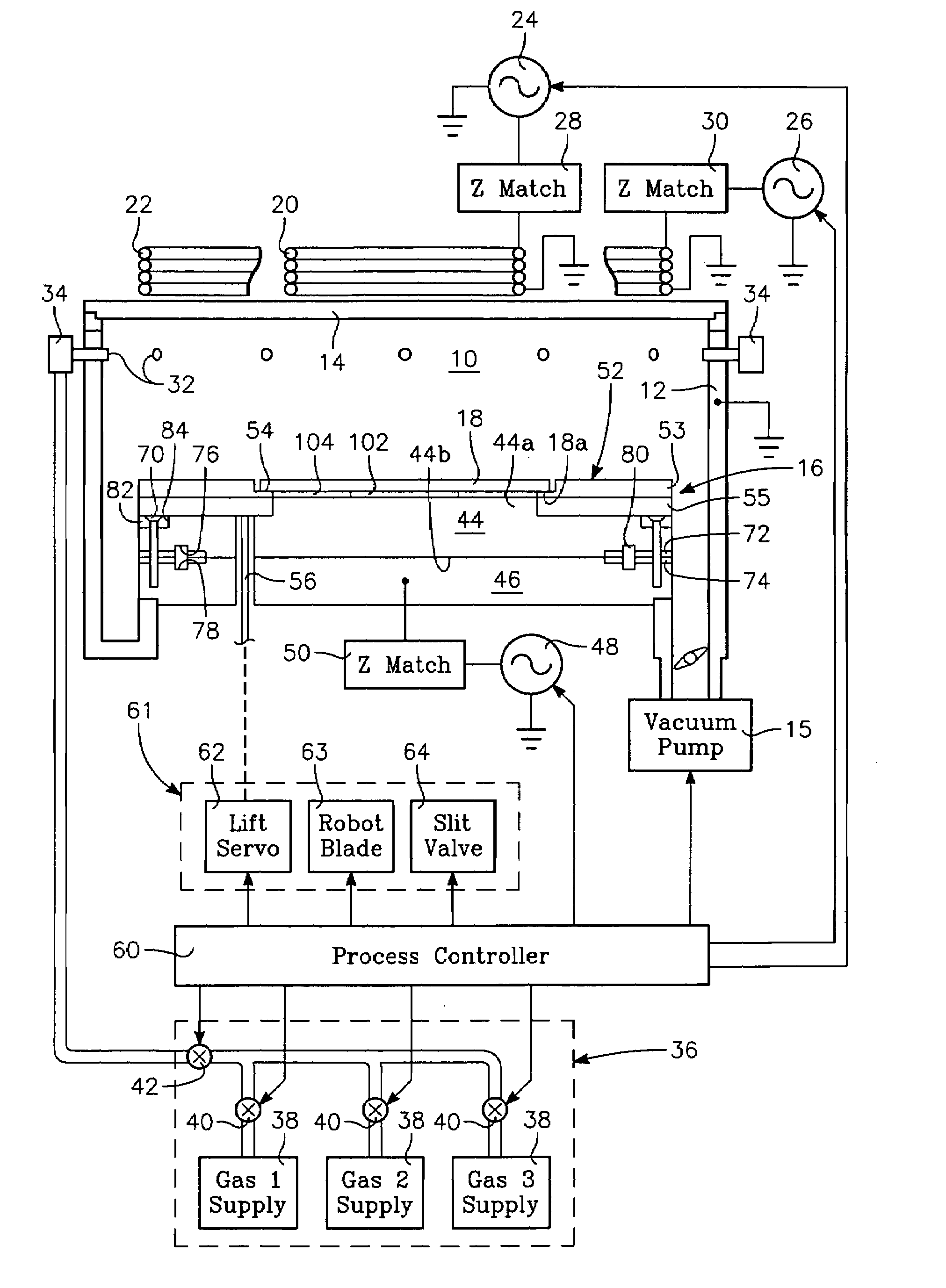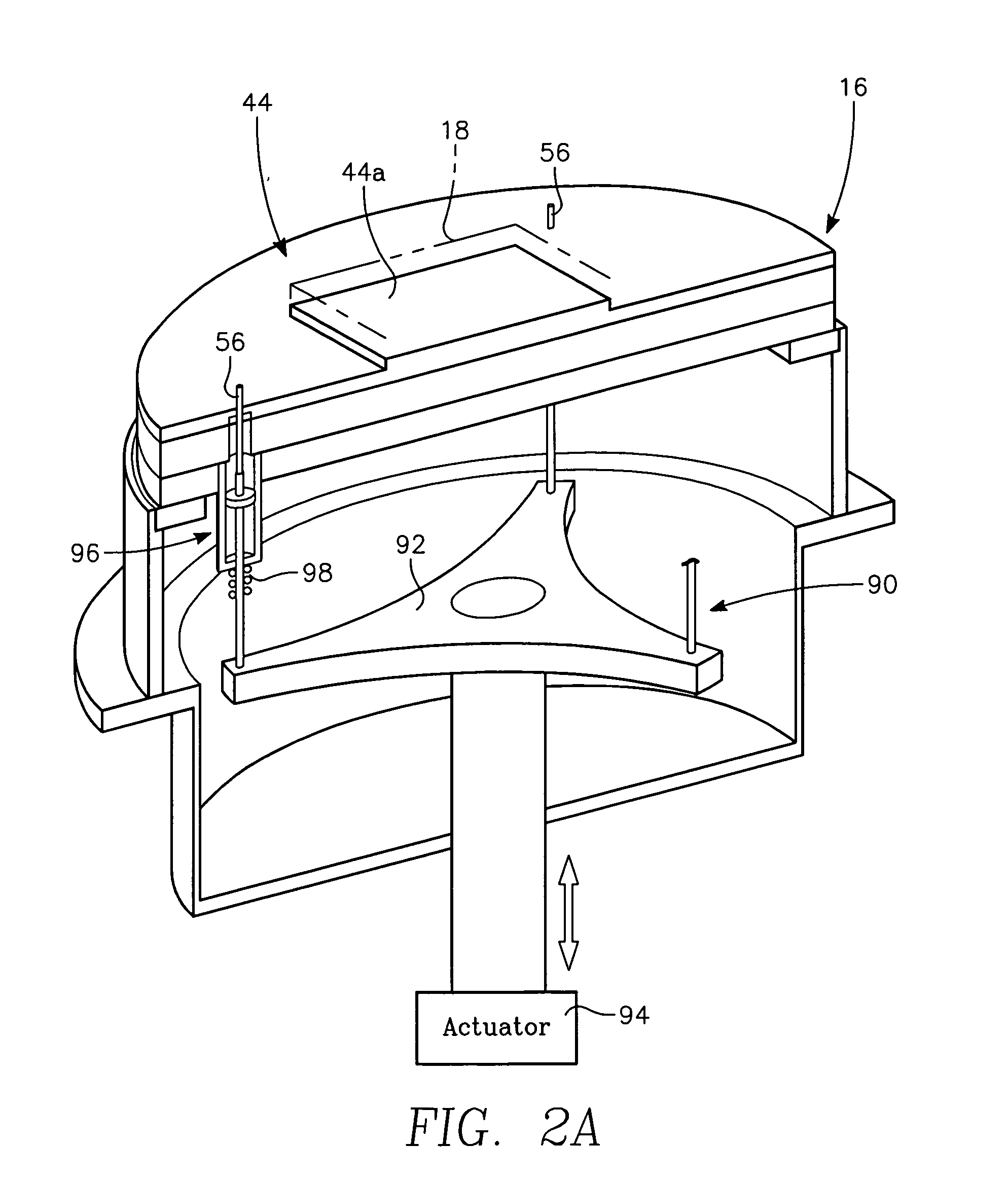Mask etch plasma reactor with variable process gas distribution
- Summary
- Abstract
- Description
- Claims
- Application Information
AI Technical Summary
Benefits of technology
Problems solved by technology
Method used
Image
Examples
Embodiment Construction
Cathode with Enhanced RF Uniformity:
[0036]We have discovered that one source of non-uniform etch rate distribution in mask etch processes is the existence of RF electrical non-uniformities in the support pedestal or cathode holding the mask in the plasma reactor in which the mask etch process is carried out. RF bias power is applied to the pedestal to control plasma ion energy at the mask surface, while RF source power is applied to an overhead coil antenna, for example, to generate plasma ions. The RF bias power controls the electric field at the mask surface that affects the ion energy. Since the ion energy at the mask surface affects the etch rate, RF electrical non-uniformities in the pedestal create non-uniformities in the distribution of etch rate across the mask surface. We have discovered that there are several sources of RF non-uniformity in the pedestal. One is the titanium screws that fasten the aluminum pedestal (cathode) and aluminum facilities plate together. The screw...
PUM
| Property | Measurement | Unit |
|---|---|---|
| Angle | aaaaa | aaaaa |
| Flow rate | aaaaa | aaaaa |
| Circumference | aaaaa | aaaaa |
Abstract
Description
Claims
Application Information
 Login to View More
Login to View More - R&D
- Intellectual Property
- Life Sciences
- Materials
- Tech Scout
- Unparalleled Data Quality
- Higher Quality Content
- 60% Fewer Hallucinations
Browse by: Latest US Patents, China's latest patents, Technical Efficacy Thesaurus, Application Domain, Technology Topic, Popular Technical Reports.
© 2025 PatSnap. All rights reserved.Legal|Privacy policy|Modern Slavery Act Transparency Statement|Sitemap|About US| Contact US: help@patsnap.com



